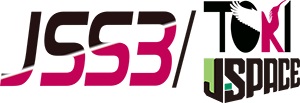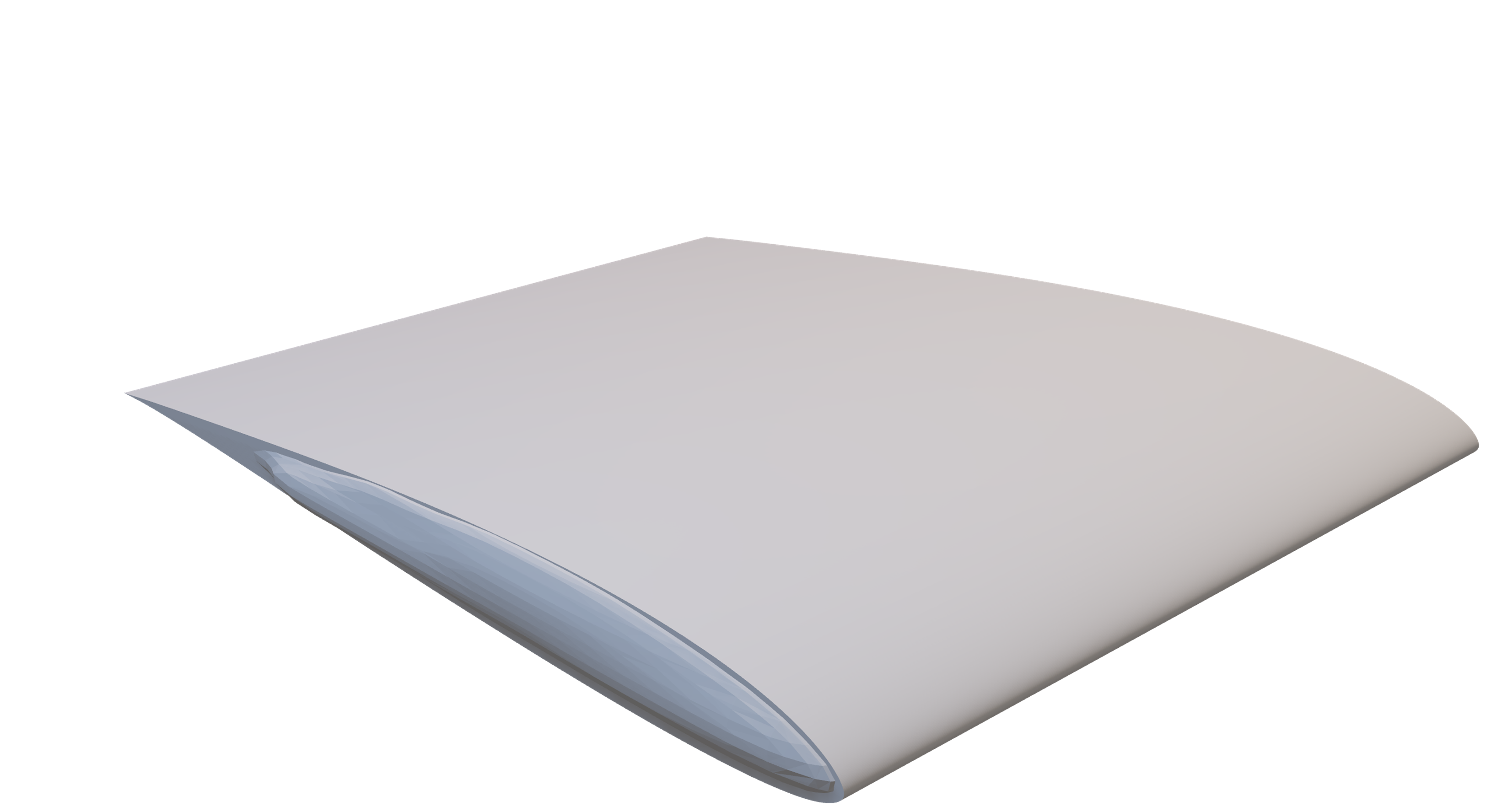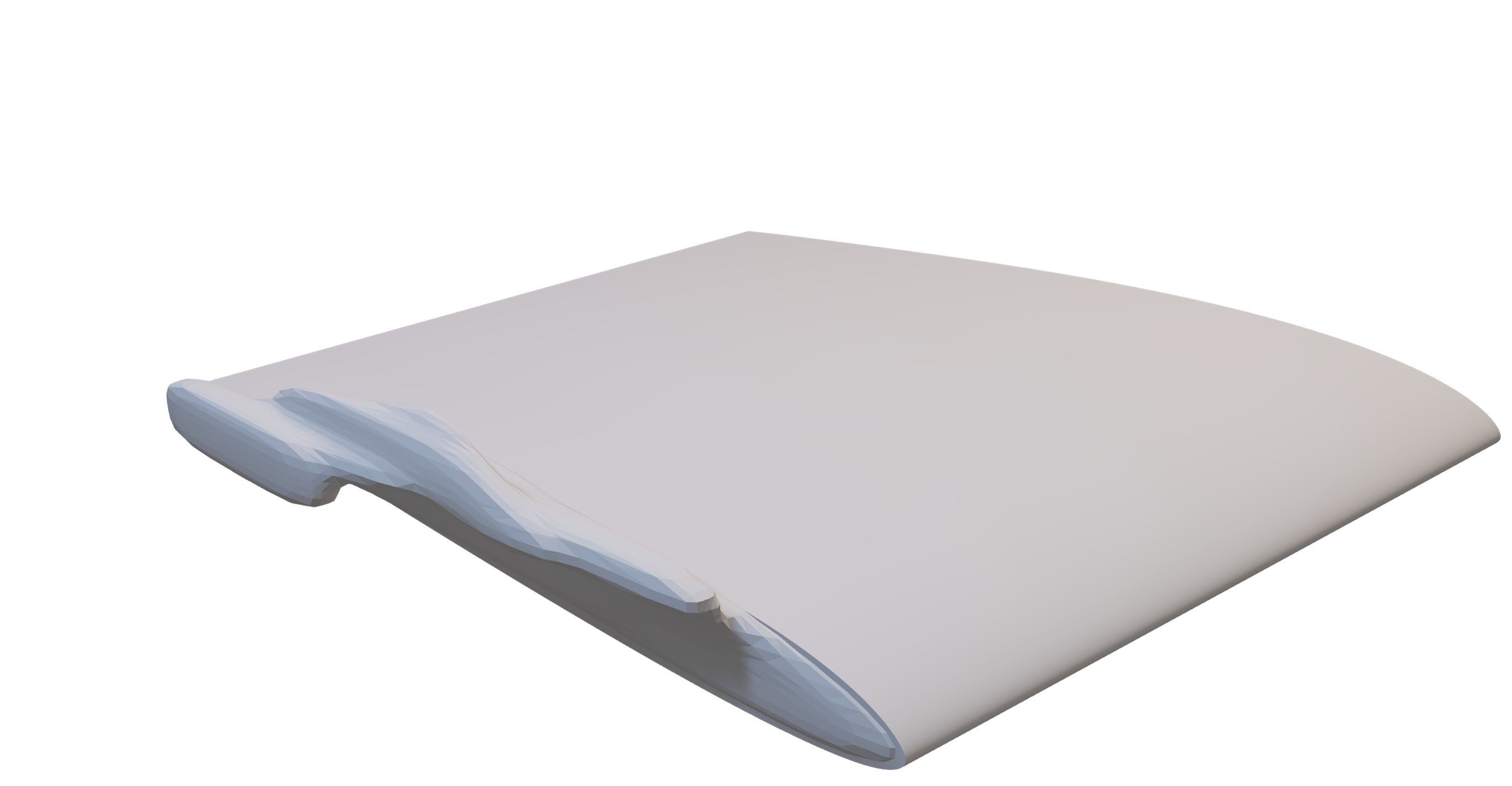Three-Dimensional Global Multiobjective Aerodynamic Design Optimization of Wingtip Geometies
JAXA Supercomputer System Annual Report February 2023-January 2024
Report Number: R23EDU10504
Subject Category: Space and Astronautical Science
- Responsible Representative: Shujiro Sawai, Professor, Institute of Spece and Astronautical Science
- Contact Information: Akira Oyama(oyama.akira@jaxa.jp)
- Members: Naruhiko Nimura, Akira Oyama
Abstract
The objective is to demonstrate the effectiveness of a newly developed high DOF global multiobjective design optimization method, which does not require prior shape parameterization, by applying it to 3D aerodynamic shape optimization.
Reference URL
N/A
Reasons and benefits of using JAXA Supercomputer System
Since aerodynamic performance evaluation is necessary in the optimization process, the number of calculations is large, and each calculation is large-scale, large-scale parallel computation using a supercomputer is essential.
Achievements of the Year
We performed generative optimization of wing tip geometry for a low aspect ratio rectangular wing under low Reynolds number cruise conditions. An unstructured grid was automatically generated to evaluate the solution, and aerodynamic performance was evaluated using FaSTAR. A newly developed evolutionary algorithm was used for optimization, and a total of 4,800 solution evaluations were conducted for 160 individuals and 30 generations. Two objective functions, lift and drag coefficients, were used. As a result, a variety of solutions with a wide range of performance were obtained, including solutions that outperformed the baseline geometry. The aerodynamic performance of each solution was discussed by visualizing the flow field.

Fig.1: Distribution of solutions in the objective function space obtained from 4800 solution evaluations
Publications
– Oral Presentations
Nimura, Naruhiko, and Akira Oyama. “Global Multiobjective Aerodynamic Optimization of Wingtip Design for Micro Aerial Vehicle.”AIAA SCITECH 2024 Forum. 2024.
Usage of JSS
Computational Information
- Process Parallelization Methods: MPI
- Thread Parallelization Methods: N/A
- Number of Processes: 144
- Elapsed Time per Case: 6.5 Hour(s)
JSS3 Resources Used
Fraction of Usage in Total Resources*1(%): 0.52
Details
Please refer to System Configuration of JSS3 for the system configuration and major specifications of JSS3.
| System Name | CPU Resources Used(Core x Hours) | Fraction of Usage*2(%) |
|---|---|---|
| TOKI-SORA | 13626324.67 | 0.62 |
| TOKI-ST | 163057.50 | 0.18 |
| TOKI-GP | 0.00 | 0.00 |
| TOKI-XM | 0.00 | 0.00 |
| TOKI-LM | 0.00 | 0.00 |
| TOKI-TST | 0.00 | 0.00 |
| TOKI-TGP | 0.00 | 0.00 |
| TOKI-TLM | 0.00 | 0.00 |
| File System Name | Storage Assigned(GiB) | Fraction of Usage*2(%) |
|---|---|---|
| /home | 245.00 | 0.20 |
| /data and /data2 | 5070.00 | 0.03 |
| /ssd | 0.00 | 0.00 |
| Archiver Name | Storage Used(TiB) | Fraction of Usage*2(%) |
|---|---|---|
| J-SPACE | 0.00 | 0.00 |
*1: Fraction of Usage in Total Resources: Weighted average of three resource types (Computing, File System, and Archiver).
*2: Fraction of Usage:Percentage of usage relative to each resource used in one year.
ISV Software Licenses Used
| ISV Software Licenses Used(Hours) | Fraction of Usage*2(%) | |
|---|---|---|
| ISV Software Licenses(Total) | 6.49 | 0.00 |
*2: Fraction of Usage:Percentage of usage relative to each resource used in one year.
JAXA Supercomputer System Annual Report February 2023-January 2024




